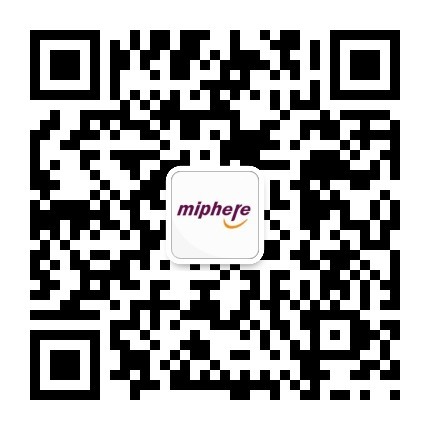
Guangzhou Miphere address :
Room G 9th Floor,
No.111-115, Tiyu West Road,
Tianhe District, Guangzhou
Company phone :
020-38259721
Company fax :
020-38259713
WeChat public number :

Xiamen health check address:
Xiamen Heron District, Xiang
Lu Hotel G, Miphere
international medical center
Xiamen telephone :
400-8813-789
Channel phone :
0592-3582184
WeChat public number:

 You are now in a position to:Home > News > Application of radionuclide myocardial perfusion imaging and radionuclide perfusion imaging
You are now in a position to:Home > News > Application of radionuclide myocardial perfusion imaging and radionuclide perfusion imaging1. what is the radionuclide myocardial perfusion imaging?
Radionuclide myocardial perfusion imaging is a diagnostic method of imaging. It has the advantages of simple, noninvasive, safe and accurate diagnosis. Myocardial perfusion and myocardial cell function can be observed by nuclide myocardial perfusion imaging, that is to say, we can directly see whether myocardial ischemia exists.
2. radionuclide myocardial perfusion imaging on precordial discomfort, pain, shortness of breath and other symptoms of the patients have what help?
These symptoms may be caused by myocardial ischemia of coronary heart disease. Therefore, nuclide myocardial perfusion imaging can help the patients with these symptoms accurately diagnose whether they have coronary heart disease or not, the accuracy rate is more than 90%, or even more than 95%, so that they can get timely treatment.
What are the other help of 3. radionuclide myocardial perfusion imaging for patients with coronary heart disease?
For patients who have been diagnosed with coronary heart disease, radionuclide myocardial perfusion imaging can help assess your prognosis and assess your risk. That is, if your myocardial perfusion imaging is normal, it indicates that the probability of cardiac events (myocardial infarction and sudden cardiac death) is less than 1% within a year, which indicates that the prognosis is good, and it is relatively safe.
What is the help of 4. radionuclide myocardial perfusion imaging for the treatment of patients with coronary heart disease?
Radionuclide myocardial imaging can help you determine the treatment program. That is: if your myocardial perfusion imaging is normal, medical treatment is the first choice; coronary stenting or coronary bypass should be performed if there is myocardial ischemia.
What is the effect of 5. nuclide myocardial perfusion imaging on patients who have passed or did bypass surgery?
Radionuclide myocardial perfusion imaging can be used to evaluate the curative effect; it can be seen if there is new myocardial ischemia.
6. why should a load test be carried out at the same time when radionuclide myocardial perfusion imaging?
Under normal circumstances, even if the coronary artery reaches 70-80%, the myocardial ischemia may not show in resting condition. Only when the amount of oxygen consumption is increased, can the myocardial ischemia manifest itself. Therefore, in order to accurately diagnose myocardial ischemia of coronary heart disease, we should do the load test in the radionuclide myocardial perfusion imaging.
7. what is the myocardial perfusion imaging?
It is the intervention load test during myocardial perfusion imaging. The load test is divided into two kinds: exercise load test and drug loading test. The purpose is to make the patient in the state of heart load, if there is myocardial ischemia, it can be reflected by myocardial perfusion imaging, so as to get accurate diagnosis.
What should the patient pay attention to before the 8. load test?
Before the load test, patients should stop using vasodilator drugs and inhibit heart rate drugs (such as nitrates, angiotensin inhibitors, beta blockers, etc.), all of these drugs may affect the load test, and further affect the accuracy of myocardial ischemia diagnosis.
What is the procedure for 9. radionuclide myocardial perfusion imaging?
The radionuclide myocardial perfusion imaging is usually completed at two days, and the load and resting imaging are carried out respectively. Intravenous injection of imaging agent (radionuclide) at load test or resting state, after 20 minutes to half an hour, eat fat meal (fried eggs, whole milk, chocolate, etc.), and myocardial perfusion imaging for about 90 minutes.
What should the patients pay attention when 10. radionuclide myocardial perfusion imaging?
Attention should be paid to the examinee: imaging examination into the vegetarian breakfast that day, 1-2 days before discontinuation of vasodilators and beta blockers, check the date of carrying the fried egg or milk fat meal to the Department of nuclear medicine; suffering from bronchial asthma do not recommend drug test (adenosine, Pan Shengding).
What is the effect of 11. radionuclide myocardial imaging on patients with myocardial infarction?
For the patients with myocardial infarction, the purpose of radionuclide myocardial imaging is to assess whether there is a viable myocardium in the infarct area to determine the next step of treatment. The best method now is the radionuclide myocardial metabolism imaging.
12. what is the radionuclide myocardial metabolism imaging?
The survival myocardium in the myocardial infarction is in the ischemic state, and its ability to absorb glucose is improved. Radionuclide myocardial metabolism imaging is to detect whether there is viable myocardium in myocardial infarction area by detecting myocardial glucose uptake in myocardial infarction area.
What is the difference between 13. radionuclide myocardial perfusion imaging and multi row CT and coronary angiography?
Radionuclide myocardial perfusion imaging, multi row CT and coronary angiography can be used to diagnose coronary heart disease. The radionuclide myocardial perfusion imaging mainly shows whether the myocardium is ischemic and the function of the cardiac myocytes is normal. Multi row CT and coronary arteriography mainly showed whether coronary artery had plaque, calcification and stenosis.
For example: like the coronary artery irrigation canals, myocardial like rice, farmers are more concerned about the growth of rice, if the rice is good, that food and water supply, farmers will not need to go to the drains; once the piece in the paddy rice appeared withered, that this lack of nutrients in paddy field, farmers only need to repair the water supply in paddy field can be, but not necessary to repair all drains.
Therefore, radionuclide myocardial perfusion imaging is to observe the growth of rice (myocardial ischemia), while multislice CT and coronary angiography are used to observe whether there is blockage in the channel.
14. what is the significance of myocardial ischemia for patients with coronary heart disease?
Understanding myocardial ischemia can help patients with accurate diagnosis of coronary heart disease, more importantly, to help patients with coronary heart disease determine the "criminal blood vessel". Because the site of myocardial ischemia was determined, the coronary artery was identified.
15. what is the significance of determining the "criminal blood vessel" of the heart?
Coronary atherosclerosis is a widespread disease, once the cause of myocardial ischemia will be as early as possible coronary revascularization treatment, to prevent the occurrence of cardiac events. Before undergoing coronary revascularization, doctors need to find the "blood vessels" that cause myocardial ischemia, so that we can place coronary stent and bypass surgery in a targeted manner. Therefore, before the operation of coronary artery revascularization, the radionuclide myocardial imaging and the determination of the "criminal blood vessel" have important clinical significance.
16. what is the radionuclide perfusion imaging?
Radionuclide lung perfusion imaging is: through intravenous injection of a small amount of radioactive protein particles, it enters the pulmonary artery with blood flow and temporarily stays in the pulmonary capillaries. The patency of pulmonary artery and branch can be displayed by special imaging device (SPECT).
Radionuclide perfusion imaging can accurately determine the location, range and degree of pulmonary artery and branch blockage.
17. pulmonary embolism is a pulmonary artery occlusive disease. Pulmonary perfusion imaging can be used to diagnose. Why should lung ventilation imaging be needed?
Pulmonary perfusion imaging method in diagnosis of pulmonary embolism is very good, but its specificity is low, that is to say, all can cause pulmonary artery obstruction diseases, such as chronic bronchitis, pulmonary tuberculosis, lung cancer, pulmonary infection, will lead to pulmonary perfusion abnormalities, the disease can also cause abnormal lung ventilation, pulmonary embolism and pulmonary ventilation imaging is normal, therefore, pulmonary perfusion imaging and pulmonary ventilation imaging combined application can greatly improve the accuracy of diagnosis of pulmonary embolism.
18. in the diagnosis of pulmonary embolism by radionuclide perfusion / ventilation imaging, why should the radionuclide double extremity vein imaging be performed at the same time?
Most of the emboli that cause pulmonary embolism originate from thrombosis of the veins of the lower extremities. Its advantage is in diagnosing pulmonary embolism, and also identifying the source of the emboli, so as to facilitate the treatment of the causes. In addition, it is possible to reduce the use of a radiopharmaceuticals, that is, to reduce the trouble of two checks, and to save a charge of medicine.